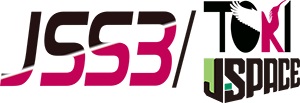Research on numerical simulation techniques for complex flows
JAXA Supercomputer System Annual Report February 2023-January 2024
Report Number: R23EDA201J02
Subject Category: Aeronautical Technology
- Responsible Representative: NAKAMURA Toshiya, Director, Aviation Technology Directrate, Fundamental Aeronautics Research Unit
- Contact Information: Abe Hiroyuki(abe.hiroyuki@jaxa.jp)
- Members: Hiroyuki Abe, Shingo Matsuyama, Yasuhiro Mizobuchi, Taisuke Nambu
Abstract
Fluid simulation in the aerospace field targets flow fields with turbulence and chemical reactions around aircraft and spacecraft. In addition, simulations of combustors for gas turbine engines and rocket engines sometimes have to deal with complex geometries. This study aims to establish numerical simulation techniques that can analyze such a wide variety of physical phenomena and complex geometries with high accuracy and efficiency.
Reference URL
N/A
Reasons and benefits of using JAXA Supercomputer System
Since turbulence analysis by Direct Numerical Simulation (DNS) and Large Eddy Simulation (LES) is the primary tool in this study, a three-dimensional unsteady analysis must be performed. In addition, governing equations for a large number of chemical species produced by chemical reactions must be solved in the analysis of combustion flows. The computational cost of such an analysis is so high that it is impossible without the use of a supercomputer.
Achievements of the Year
A new SGS model for LES was developed by modeling the SGS stress transport equation through a priori testing using the DNS database of turbulent plane jets. With the developed model, LES was performed for turbulent plane jet with Re=10,000 using a grid with a resolution 6 times coarser than the DNS (1/216 grid points), showing that the LES with the SGS stress transport equation model reproduces the DNS velocity field very well (Figure 1).

Fig.1: Results of LES for a turbulent plane jet with Re=10,000 using the SGS stress transport equation model. Comparison of LES and DNS for the instantaneous velocity field (left) and time-averaged velocity field along the jet center-line (right).
Publications
– Non peer-reviewed papers
1) Shingo Matsuyama, “Oh, Are You Using That SGS Model in the Wrong Way?”, Proceedings of the 55th Fluid Dynamics Conference / the 41st Aerospace Numerical Simulation Symposium, JAXA-SP-23-009, p.265-274, 2024.
– Oral Presentations
1) Shingo Matsuyama, “Oh, Are You Using That SGS Model in the Wrong Way?”, 55th Fluid Dynamics Conference / the 41st Aerospace Numerical Simulation Symposium.
2) Shingo Matsuyama, “LES of turbulent plane jet using an SGS stress equation model”, JSFM Annual Meeting 2023, 2023.
3) Shingo Matsuyama, “LES of turbulent plane jet at Re=10^4 using an SGS stress equation model”, the 37th Computational Fluid Dynamics Symposium, 2023.
4) Shingo Matsuyama, “LES Modeling with SGS Stress Transport Equations”, the 39th TSFD Symposium, 2024.
Usage of JSS
Computational Information
- Process Parallelization Methods: MPI
- Thread Parallelization Methods: OpenMP
- Number of Processes: 750 – 1500
- Elapsed Time per Case: 10 Hour(s)
JSS3 Resources Used
Fraction of Usage in Total Resources*1(%): 1.08
Details
Please refer to System Configuration of JSS3 for the system configuration and major specifications of JSS3.
| System Name | CPU Resources Used(Core x Hours) | Fraction of Usage*2(%) |
|---|---|---|
| TOKI-SORA | 29201399.41 | 1.32 |
| TOKI-ST | 40391.64 | 0.04 |
| TOKI-GP | 0.00 | 0.00 |
| TOKI-XM | 106.74 | 0.06 |
| TOKI-LM | 1395.79 | 0.11 |
| TOKI-TST | 0.00 | 0.00 |
| TOKI-TGP | 0.00 | 0.00 |
| TOKI-TLM | 0.00 | 0.00 |
| File System Name | Storage Assigned(GiB) | Fraction of Usage*2(%) |
|---|---|---|
| /home | 124.61 | 0.10 |
| /data and /data2 | 8913.71 | 0.05 |
| /ssd | 984.08 | 0.09 |
| Archiver Name | Storage Used(TiB) | Fraction of Usage*2(%) |
|---|---|---|
| J-SPACE | 30.01 | 0.11 |
*1: Fraction of Usage in Total Resources: Weighted average of three resource types (Computing, File System, and Archiver).
*2: Fraction of Usage:Percentage of usage relative to each resource used in one year.
ISV Software Licenses Used
| ISV Software Licenses Used(Hours) | Fraction of Usage*2(%) | |
|---|---|---|
| ISV Software Licenses(Total) | 495.20 | 0.22 |
*2: Fraction of Usage:Percentage of usage relative to each resource used in one year.
JAXA Supercomputer System Annual Report February 2023-January 2024


